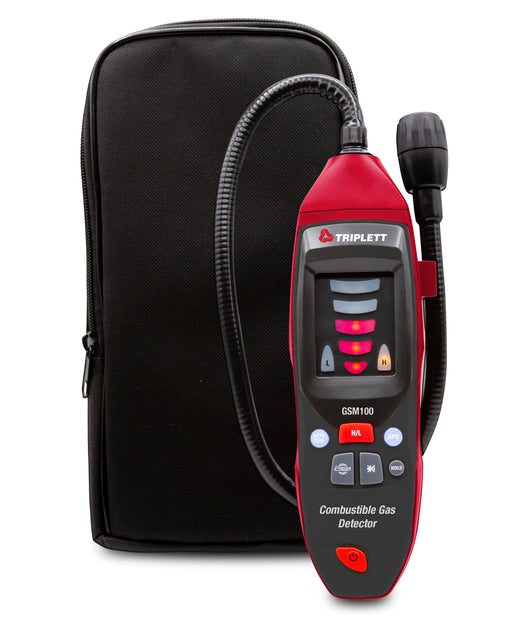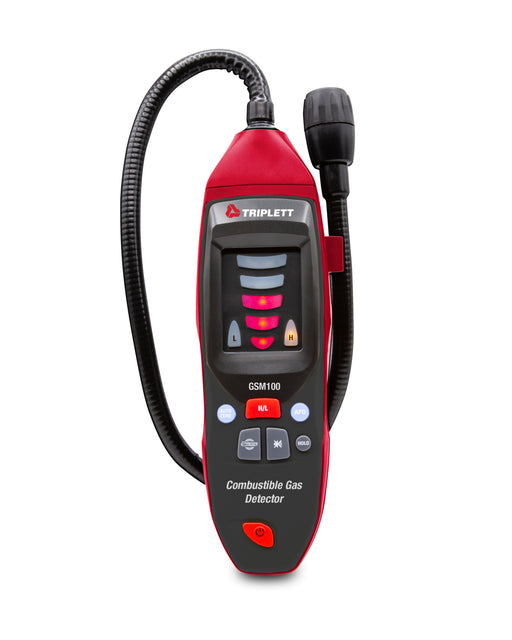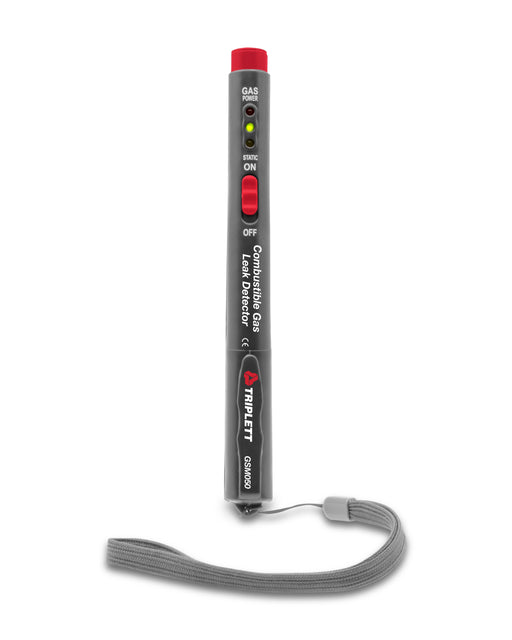Know More About Triplett Combustible Gas Detector and Pen
What is a Combustible Gas Detector?
A combustible gas detector is a safety device that identifies flammable gases in the air before they become a hazard. These gases include methane, propane, hydrogen, butane, ammonia, and other volatile compounds. Triplett combustible gas detectors instantly alert users with LED lights, audible alarms, and vibration signals. Calibrated to fresh air and with adjustable sensitivity, these detectors provide accurate measurements in homes, commercial buildings, or industrial sites. Using a combustible gas detector reduces the risk of fire, explosions, and health hazards.
How Does a Combustible Gas Detector Ensure Safety?
A combustible gas detector acts as an early warning system. It detects even small amounts of flammable gases, giving users time to respond and prevent accidents. Triplett detectors use advanced sensors such as catalytic bead sensors or molecular property spectrometer (MPS) sensors for fast and reliable detection. When gas is detected, the device provides immediate visual, audible, and vibration alerts. This allows professionals, technicians, and homeowners to act quickly and reduce the risk of property damage, injury, or fire.
Where Can Combustible Gas Detectors Be Used?
Combustible gas detectors are versatile tools used in industrial, commercial, and residential settings. Industrial applications include oil and gas plants, chemical facilities, storage tanks, and manufacturing units. Commercial use covers HVAC inspections, plumbing checks, and monitoring confined spaces. Residential applications include kitchens, garages, basements, utility rooms, and areas near gas appliances. Portable natural gas detectors are ideal for field technicians inspecting pipelines, meter sets, and remote locations. Wherever flammable gases may occur, these detectors help protect people, property, and equipment.
Why Should You Use a Combustible Gas Detector?
Using a combustible gas detector ensures early detection of hazardous gases, significantly reducing the risks of fire, explosion, and health hazards. Triplett detectors are portable, durable, and easy to operate across various environments. Instant alerts via LED lights, sound, and vibration enable quick response to leaks, offering peace of mind in industrial, commercial, and residential applications.
How Do Combustible Gas Detectors Work?
Combustible gas detectors work by sensing flammable gases through advanced internal sensors such as catalytic bead, MPS, or infrared sensors. These sensors detect gas concentrations and trigger alerts through visual and audible signals. Adjustable sensitivity allows detection of both minor leaks and higher gas concentrations. Triplett detectors are designed for reliable performance and ease of use during inspections in industrial plants, commercial sites, or homes.
Which Precautions Should Be Taken When Using a Combustible Gas Detector?
To use a combustible gas detector safely:
- Avoid extremely humid or wet environments.
- Do not expose the detector to rain or direct water.
- Operate the device in well-lit and uncluttered areas.
- Avoid touching grounded or earthed surfaces during testing.
- Perform regular maintenance, battery checks, and calibration.
- Wear protective gear such as gloves, eye protection, and safety shoes.
Where Are Combustible Gas Detectors Commonly Used?
Triplett combustible gas detectors are used across industrial, commercial, and residential applications:
- Industrial: Oil and gas plants, chemical facilities, and manufacturing units.
- Commercial: HVAC inspections, plumbing maintenance, and confined space monitoring.
- Residential: Kitchens, garages, basements, and utility rooms.
Portable combustible gas detectors are ideal for field technicians inspecting pipelines, meter sets, and remote areas, helping prevent hazards and maintain operational safety.
Which Types of Combustible Gas Detectors Does Triplett Offer?
Triplett offers the following types of combustible gas detectors (Detailed specifications are available on their respective product pages).
- View Combustible Gas Detector with Flex Gooseneck (GSM100) : Perfect for industrial and professional use, featuring a flexible probe for hard-to-reach areas and high sensitivity.
- View Combustible Gas Leak Detector GSM050 : Compact and portable, suitable for residential or light commercial use, providing fast detection for everyday inspections.
Frequently Asked Questions (FAQ)
Q1: What gases can a combustible gas detector detect?
A: Triplett detectors can detect gases such as methane, propane, hydrogen, butane, ammonia, ethanol, and various industrial solvent mixtures.
Q2: How quickly does a combustible gas detector respond?
A: Alerts are provided within seconds through LED lights, sound, and vibration.
Q3: Can a portable natural gas detector be used in industrial settings?
A: Yes, but professional-grade detectors with flexible probes are recommended for higher sensitivity in industrial environments.
Q4: How should a combustible gas detector be maintained?
A: Store in dry areas, perform bump tests, replace batteries as needed, and follow calibration schedules for reliable operation.



